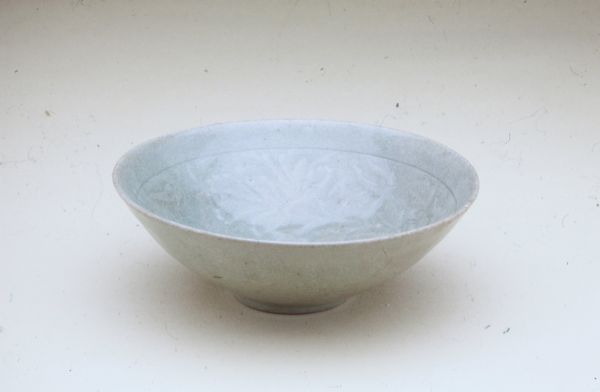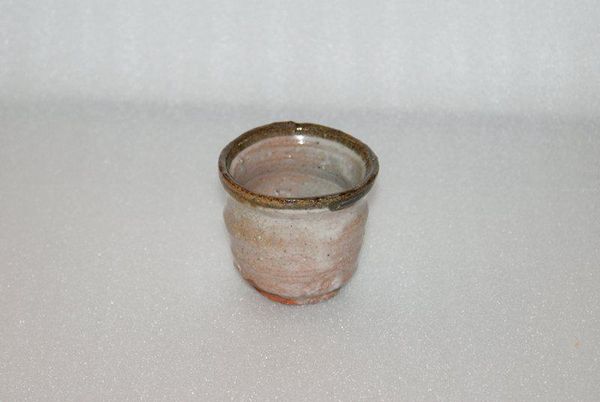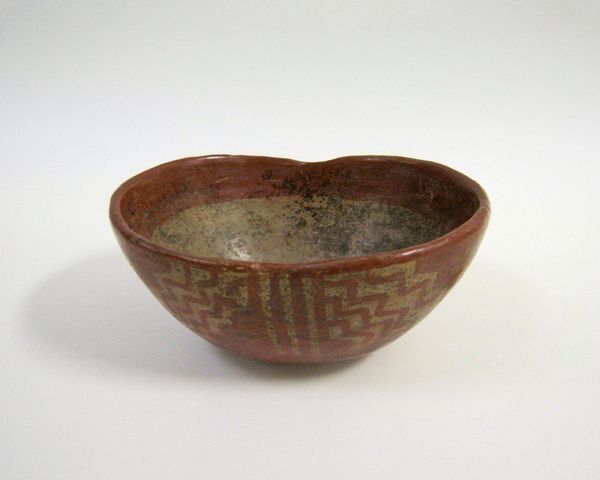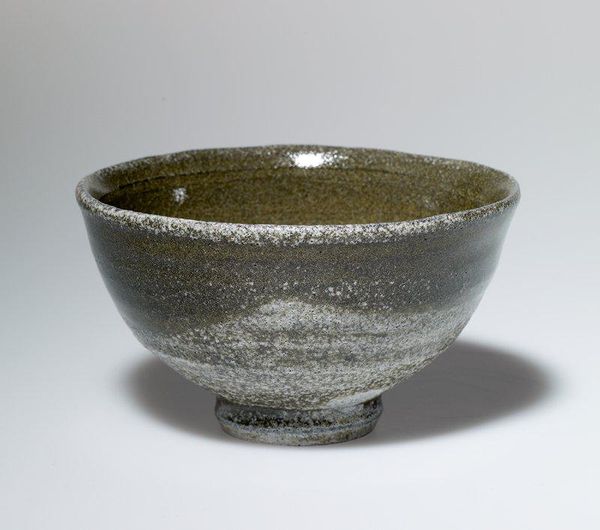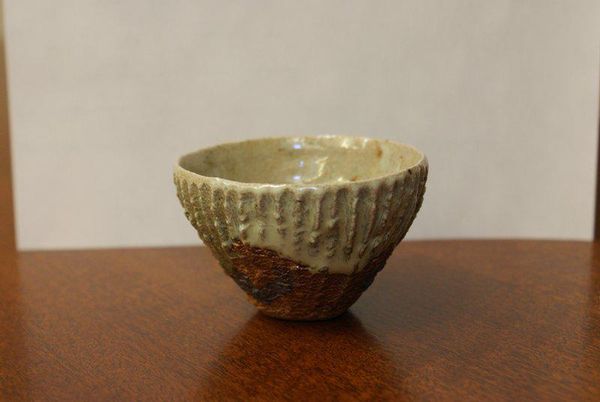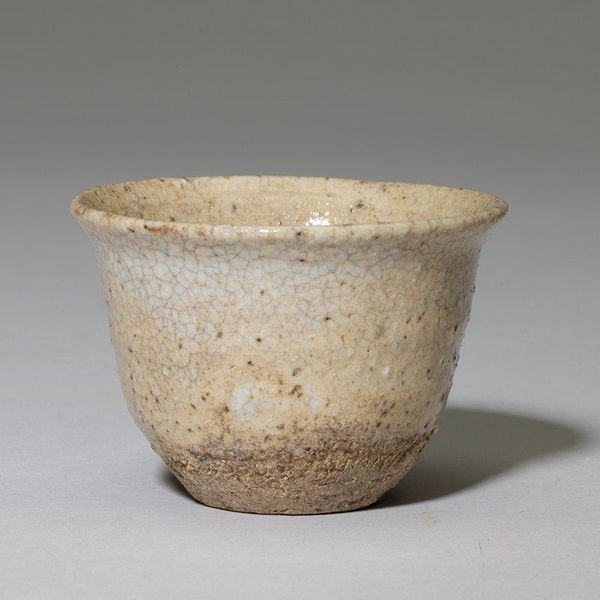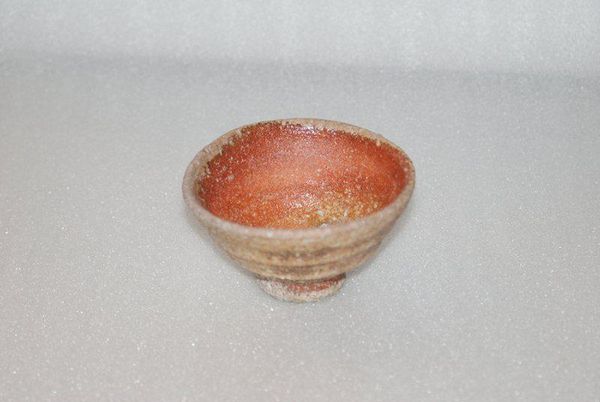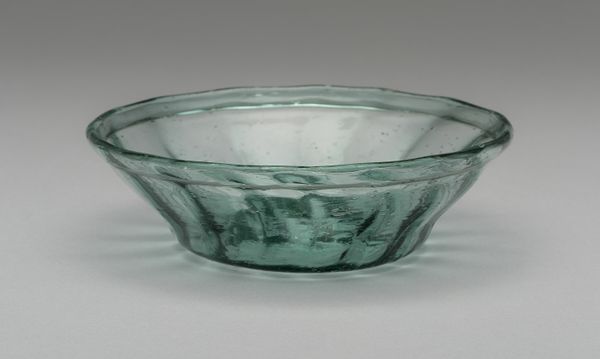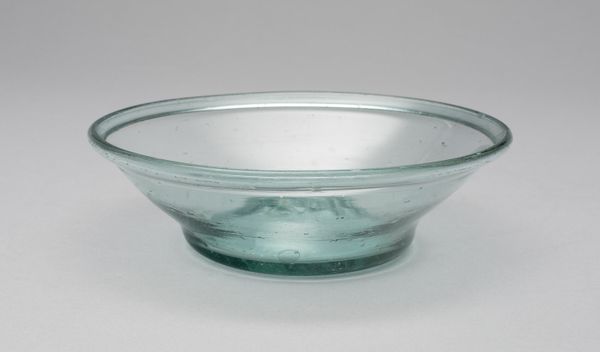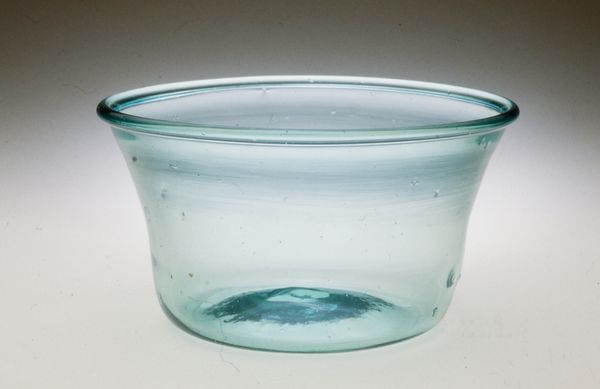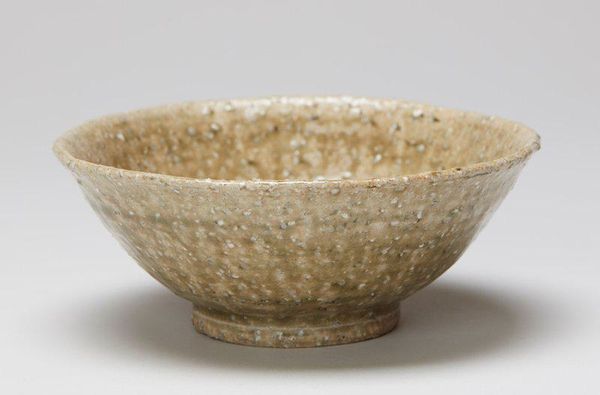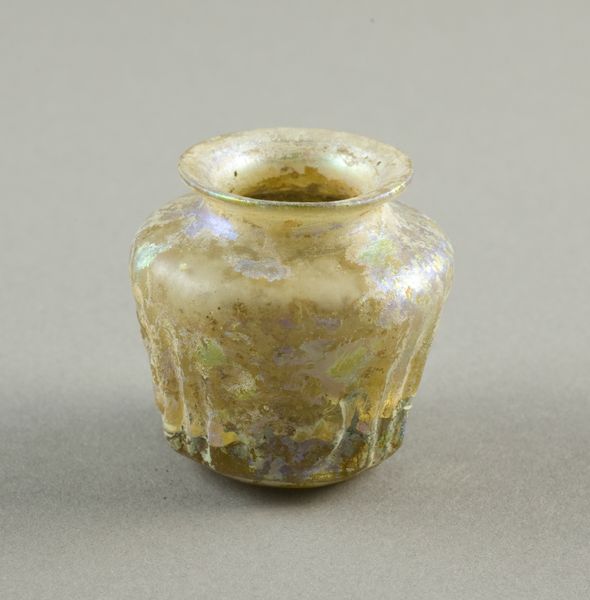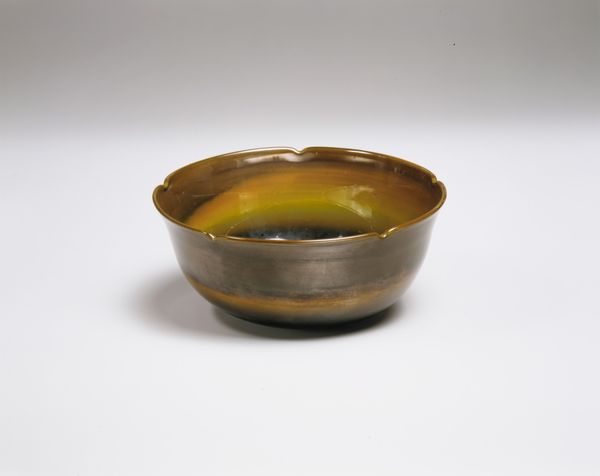
Dimensions: 1 7/8 × 3 1/2 × 3 1/2 in. (4.76 × 8.89 × 8.89 cm)
Copyright: No Known Copyright
Curator: Before us, we have a Sake cup, a ‘guinomi’ made by Hatano Hideo around the early 21st century. It’s part of the Minneapolis Institute of Art's collection. Editor: It's unassuming, at first glance, isn’t it? That soft grey wash feels almost like a cloudy day translated into ceramic. The simple form invites touch; I immediately want to feel its weight. Curator: Japanese ceramic traditions hold such significance; particularly how a seemingly functional object becomes a locus for artistic expression, think of the role of tea ceremony and tableware elevating pottery's importance. Contemporary artists like Hideo often both honor and challenge such historical status. Editor: Right, the object's quietness contrasts sharply with the complex labor and materiality behind it. You’ve got the clay itself, earthenware specifically, the firing techniques. There's a visible human hand here shaping the piece that industrial manufacture would conceal. Curator: Exactly. Craft becomes a vital link to history. These artists are responding to the flattening effects of globalization and technological acceleration. Think about the implied setting in which the sake cup is used. There’s an element of mindful presence, community engagement in its tradition. Editor: And consider the marketplace where objects like these circulate. It is not simply bought and sold; it embodies both personal artistry and historical production, raising questions about valuing the time and the craft involved. Who consumes this piece and how they consume it matters. Curator: Absolutely. Its purpose is communal and practical and also elevated, artistic. This kind of artwork highlights the values of skill, thoughtfulness, even an attitude toward living a life more slowly and deliberately. Editor: This makes me consider how an object so simple prompts us to reconsider consumption habits and values surrounding human-made work. Curator: Precisely, It highlights not only aesthetic taste but also how society values handmade and historically conscious art forms, connecting back to socio-political perspectives. Editor: It makes you think about the journey of objects from clay to commerce and how an intimate experience intertwines.
Comments
No comments
Be the first to comment and join the conversation on the ultimate creative platform.
